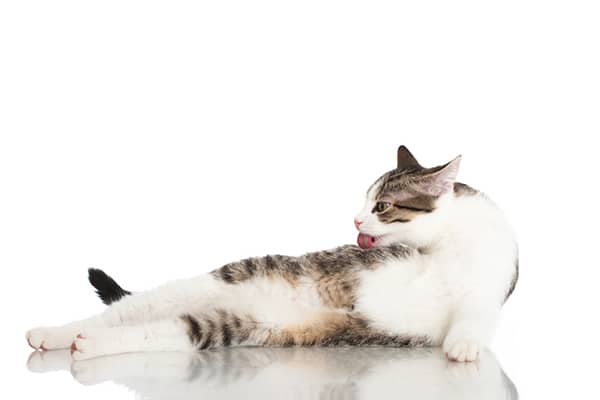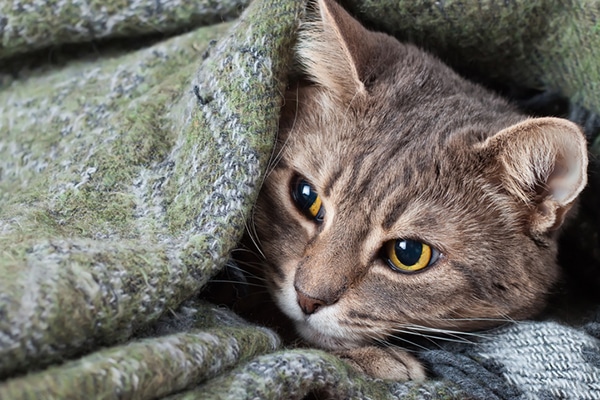With their unique ways and fickle preferences, it’s no secret that cats can be a little weird. But sometimes, that strange thing your cat does is actually a medical problem. Take, for instance, feline hyperesthesia syndrome, sometimes called twitch-skin syndrome, rippling-skin disease or rolling-skin syndrome.
What is feline hyperesthesia?

“Cats with hyperesthesia syndrome are extremely sensitive to touch in the lower back region,” says Michelle Murray, DVM, MS, Dipl. ACVIM (Neurology), CCRT, owner of NEST Veterinary Neurology in San Clemente, California. “Touching this area can cause them to suddenly vocalize, salivate, scratch, bite or lick at their back, flank area or tail, or even urinate. The skin along the back appears to twitch or ripple. They can be agitated and often run frantically around the house for about 20 to 30 seconds until the episode stops.” Cats generally go back to acting normal after an episode passes.
Feline hyperesthesia syndrome is extremely rare. Dr. Murray says that even in her neurology-only practice, she does not see feline hyperesthesia syndrome often. But for those cats who are affected, feline hyperesthesia syndrome can be troubling, especially for felines who self-mutilate in an effort to curb the uncomfortable feelings caused by an episode. Feline hyperesthesia syndrome can affect cats at any age, although it’s more frequently seen in adult cats. Any cat breed or mixed breed can be affected.
What should you do if you think your cat has feline hyperesthesia syndrome
If you notice your cat exhibiting symptoms of possible feline hyperesthesia syndrome, schedule an appointment with your regular veterinarian, who will examine your cat to look for other causes for the symptoms, such as an injury, skin disorder or flea infestation causing severe itching, or painful condition like orthopedic and spine or nerve problems.
If your vet cannot pinpoint a cause of the symptoms, the next step would be to consult a veterinary neurologist for another exam and more tests.
Diagnosing feline hyperesthesia syndrome in cats
“There is no specific test for feline hyperesthesia syndrome,” Dr. Murray explains. “The exact cause is actually unknown, but thought to be a type of seizure disorder. For this reason, the only way to diagnose feline hyperesthesia disorder is to rule out other causes for the episodes.”
Tests that your regular vet and/or veterinary neurologist might want to run include basic lab work; skin scrapings, biopsies or cultures; X-rays; and possibly advanced imaging such as MRI. “With feline hyperesthesia syndrome, all of these tests can be totally normal,” Dr. Murray explains. If no other specific cause can be identified, the veterinarian might arrive at a diagnosis of feline hyperesthesia syndrome. Know that it might take some time to go through the process of testing for and ruling out the various conditions that might be causing the symptoms.
The final word on feline hyperesthesia syndrome
Although the exact cause of feline hyperesthesia syndrome is still a mystery, since many veterinarians believe it to be a seizure disorder, treatment involves using medications.
“Anti-seizure medications (such as phenobarbital or gabapentin), anti-anxiety medications (amitryptiline or Prozac) and/or anti-inflammatories (prednisone) have varying degrees of success,” Dr. Murray says. “It is also helpful to keep the environment as calm as possible and not to touch the cat’s back area to avoid triggering episodes. In general, the prognosis is good but may involve the long-term use of medication(s) to manage the symptoms as well as possible.”
Tell us: Does your cat have feline hyperesthesia syndrome? How do you deal with feline hyperesthesia?
Thumbnail: Photography © zlyka2008 | Thinkstock.
Read more about cat health care on Catster.com:








